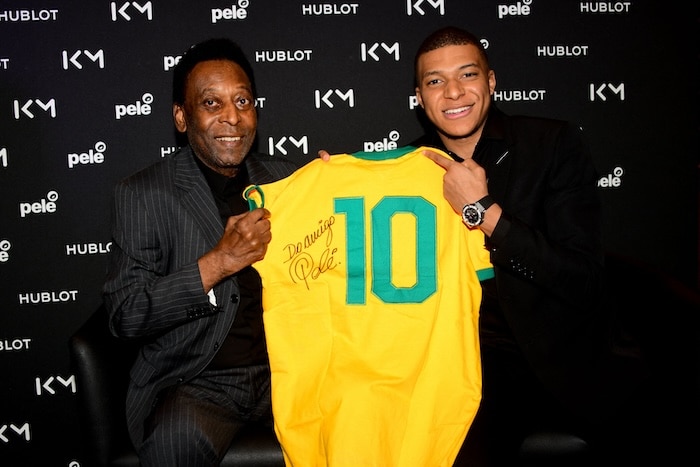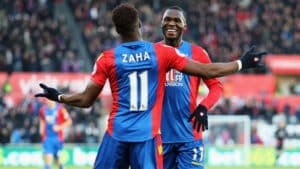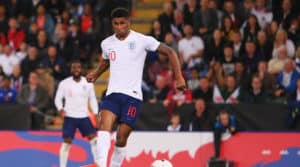Many have been anointed the “New Pele,” but none have lived up to the star quality of the Brazilian great, writes Mark Gleeson.
It was in March that Endrick confirmed all the hype about him on his fourth appearance for a new-look Brazil side, who he will be representing this month at the Copa América in the United States.
Brazil’s match-winner against England in a friendly international became the youngest to score at Wembley in either a senior men’s international or a game involving an English league club.
At 17 years and eight months, he broke the mark of one of the best players his country has ever produced.
The second-youngest scorer in an international match at the iconic London venue is another Brazilian, Ronaldo, who was 18 years and eight months old when helping his country to a 3–1 win over England in 1995.
Endrick is the latest ‘new Pelé’ to come off the production line, but it has been a long time since there has been a credible pretender to the throne of the greatest of them all.
He will be joining Real Madrid from Palmeiras for the new season and is the youngest player called into Brazil’s senior squad since Ronaldo in 1993.
Endrick broke into the Palmeiras first team two years ago and his performances matured under boss Abel Ferreira to the point where he was a major contributor to the São Paulo-based club retaining their Brazilian league title.
The young centre forward inspired a spectacular fight back last November with two goals and an assist as they came from three down against title rivals Botafogo to win the match 4–3 in the 99th minute, effectively seeing off the challenge of the Rio de Janeirobased club.
He followed that with more goals to finish the campaign with a total of 11 in 18 starts.
Real Madrid agreed to a deal worth up to £52.5 million in 2022 for Endrick to join them when he is 18, after the Copa América.
The pressure will then be on for Endrick to live up to all the hype at a club with a long tradition of ‘Galácticos’. Living with the label ‘the new Pelé’ has not always been easy, as many promising players have discovered in the past.
There have been a lot of prodigies compared to The King, but none who have been able to attain the magic heights that Pelé, who died in December 2022, did.
TEÓFILO CUBILLAS
The Peruvian was described by Pelé as his successor. Asked whether he would be at the World Cup in West Germany in 1974, after winning a third title with Brazil at Mexico ’70, Pelé replied: “No, but don’t worry, you’ll see my successor.”
Cubillas was 21 when he made a major impact at the 1970 World Cup, finishing as the third-best scorer behind Gerd Müller and Jairzinho.
In 1972, he was Libertadores Cup top scorer and South American Footballer of the Year. Peru did not qualify for the 1974 World Cup, but at the 1978 finals in Argentina, Cubillas shone again, with five more goals.
But in the end, he suffered from relative anonymity in his club career, which took in destinations in Switzerland, Portugal and the US.
LAURENT POKOU
Pelé wrote a letter to the Ivory Coast international after seeing him play for ASEC Abidjan in 1973 and told him to “live fully” his career and “make the most of his gifts and his ability” a few months before he left ASEC Abidjan for France, where he scored 52 goals in 82 matches at Stade Rennes and was dubbed ‘The Duke of Brittany’.
Pokou also set an Africa Cup of Nations scoring record, but he never won the African Footballer of the Year award, nor went to the World Cup. A complete centre forward, blessed, according to reports at the time, with a “lightning start” and “astonishing flexibility of the hips”, he had only one flaw, Pelé joked – that he was not Brazilian.
ROBINHO
At 15, he was presented to Pelé as his successor. A gifted dribbler with a carefree air, Robinho was to be ‘The Prince’ but never came close to the crown even though he played at Pelé’s club, Santos.
After moving to Real Madrid in 2005, his career was never that great even if he won 13 club titles, including with the likes of AC Milan and Manchester City, and three titles with Brazil (2007 Copa América and 2005 and 2009 Confederation Cup).
FREDDY ADU
Everything went too quickly for the American prodigy, whose parents were Ghanaian.
He debuted in Major League Soccer at the age of 14 and Nike signed him on the promise he would turn out to be bigger than Michael Jordan, Tiger Woods and LeBron James.
Knighted by Pelé, who spent time with him on the eve of his nationalteam debut at the age of 16, Adu’s career quickly crashed, and he played for a total of 15 clubs in nine countries, the last one five years ago at the age of 29.
KYLIAN MBAPPÉ
Of the French superstar, who has already won a World Cup and was runner-up in Qatar two years ago, Pelé said: “I see myself in his ability to play fast.
When the ball arrives, he already knows what to do, he already has in his mind where to go and how to direct the game or find the best solution.”
Mbappé could yet go on to emulate Pelé’s feats as he begins a new adventure away from Ligue 1 next season.





